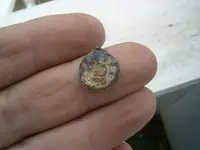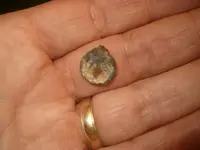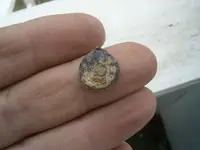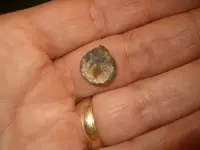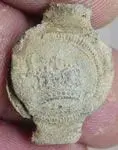romeo-1
Gold Member
- Joined
- Jul 29, 2005
- Messages
- 9,859
- Reaction score
- 7,118
- Golden Thread
- 3
- Location
- Romeotopia
- 🥇 Banner finds
- 3
- Primary Interest:
- All Treasure Hunting
I am pretty sure that this is a lead seal but is the number on the back, 1712, a date? Anyone know what this would have sealed? It is military...I think, based on where I found it and the crown.



